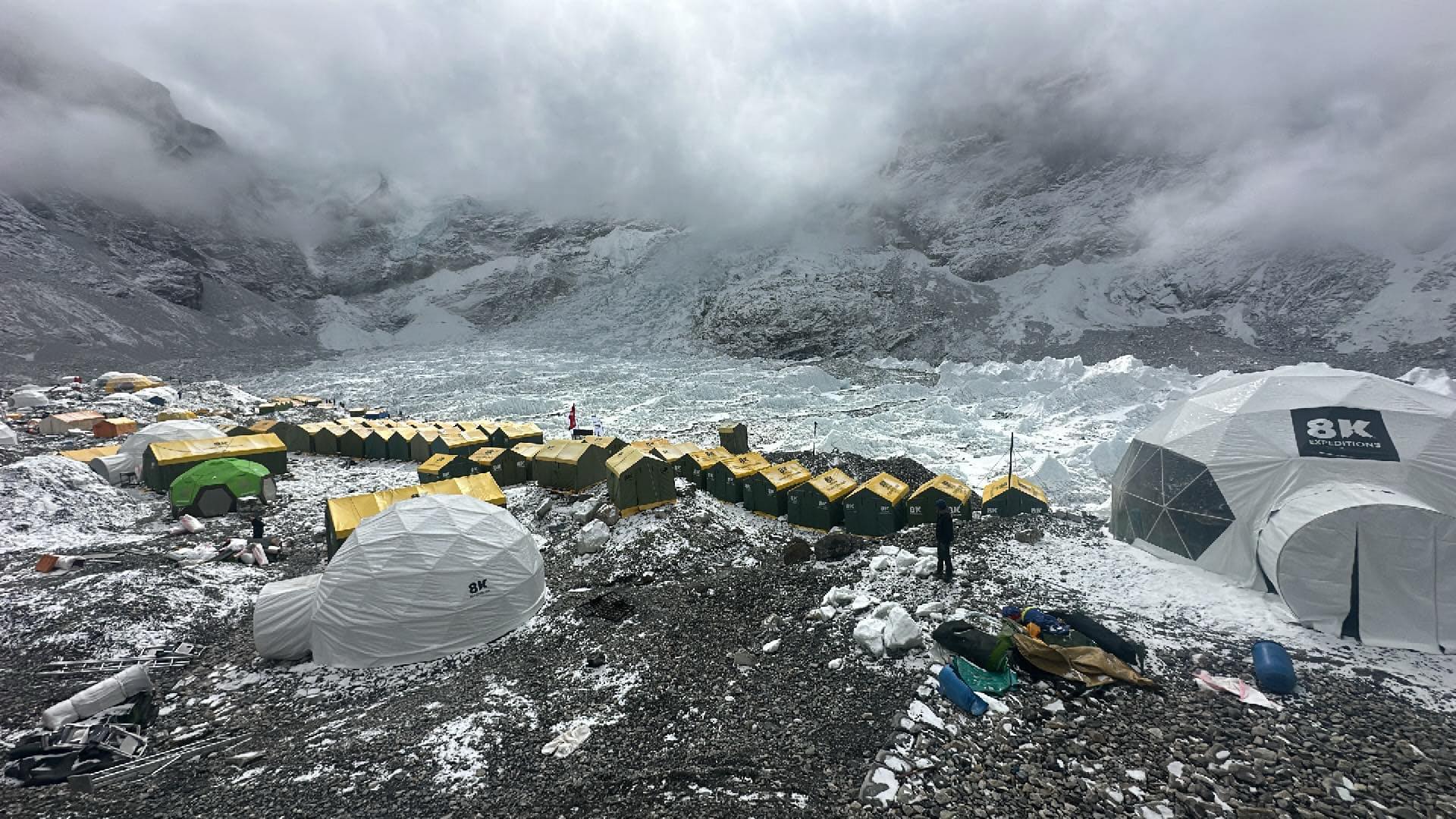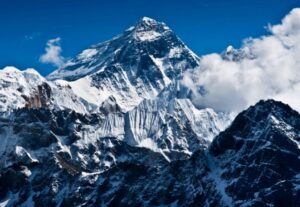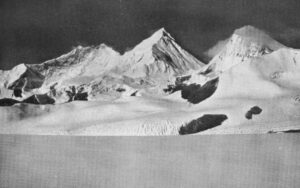As Nepal celebrates its new year, which corresponds to 2082 in their local calendar, teams are flocking to Everest in what could be the most crowded year yet. Lukla airport reports heavy traffic as both trekkers and climbers head for the upper Khumbu Valley.
The Everest season has a strong feeling of deja vu, with bigger teams than ever, fewer self-supported climbers than ever, and some familiar record-breakers.
500 climbers?
Preliminary figures suggest a record number of visitors on Everest this year. Asian Trekking told ExplorersWeb that the Indian army had three groups, at least one with 40 members. Lakpa Sherpa of 8K had over 50 clients confirmed for Everest at the beginning of the season. According to Alpymon, Seven Summit Treks has over 100 confirmations.
While the exact total is always hard to know, we can estimate based on the number of permits and summits. The current record is 478 foreigners with permits in 2023. Outfitters expect close to 500 this year. As for the number of summits, the highest in one season was 800 in 2018. That counts both foreign clients and Nepalese guides, who do not need permits.

Puja time for one of the Seven Summit Treks groups. Photo: Arnold Coster
The Alpymon blog reports that 500 people are already in Base Camp. Hundreds more will join them in the next two weeks. Some are already trekking to Base Camp, either directly or with acclimatization climbs on one of the 6,000’ers planned along the way. Many summits have been reported on Mera Peak and on Ama Dablam, where ropes were fixed to the top last week.
Only a few climbers choose to fly all the way to Base Camp, relying on hypoxic training at home or previous climbs in Nepal for acclimatization. For example, some of the nearly 40 individuals who recently summited Annapurna will try Everest next.
Rope fixing is proceeding
The Icefall Doctors, assisted by drones this year for the first time, finished fixing the route to Camp 1 (6,000m) last week. Expedition Sherpas are hurrying to ready Camp 2 for their clients’ first rotation up the mountain. Camp 2 is at around 6,400m on the flatish section of the glacier known as the Western Cwm.
The rope-fixing team (this year, 8K Expeditions) is stocking all the necessary gear at Camp 2 before continuing their work further up.
“The weather is currently bad on the mountain, so we may need more time before we can start toward the Lhotse Face,” 8K Expedition’s director, Pemba Sherpa, told ExplorersWeb.
Xenon climbers
One new wrinkle this year will feature a Furtenbach Adventures group that will fly directly from the UK to Everest Base Camp in May, once everything is prepared for a summit push. This UK group, which includes Alastair Carns, Anthony Stazicker, Garth Miller, and Kevin Godlington, has been breathing Xenon gas at home to increase their EPO levels. They plan to go for the summit immediately and complete the entire trip in a week.
Tim Howell and Jon Gupta, also from the UK, landed in Kathmandu today and will head to Everest Base Camp shortly. As he did last year, Howell will attempt a wingsuit flight from the highest place on Earth where such a flight is possible: high on the Lhotse ridge, facing south.
Guided by Gupta and supported by Sherpas, Howell will reach his exit point by climbing Lhotse mostly from the normal route. Then, at a certain point, he will diverge to his jump point.
Four no-oxygen climbers
Besides skyrunners Tyler Andrews and Karl Egloff, both pursuing a Fastest Known Time on Everest, few climbers have announced their intention to climb unsupported. We know of only two so far: Two-time Piolet d’Or winner Valery Babanov will attempt Everest without supplementary O2, and Marcin Miotk will try Lhotse in the same style.
Babanov has “only” climbed five 8,000’ers, but two of them were via new routes. Most of his ascents were on highly technical lines around the world. Now, at 59, he intends to become the oldest climber to summit Everest without supplementary oxygen. Last summer, Babanov summited K2 but used supplementary oxygen.
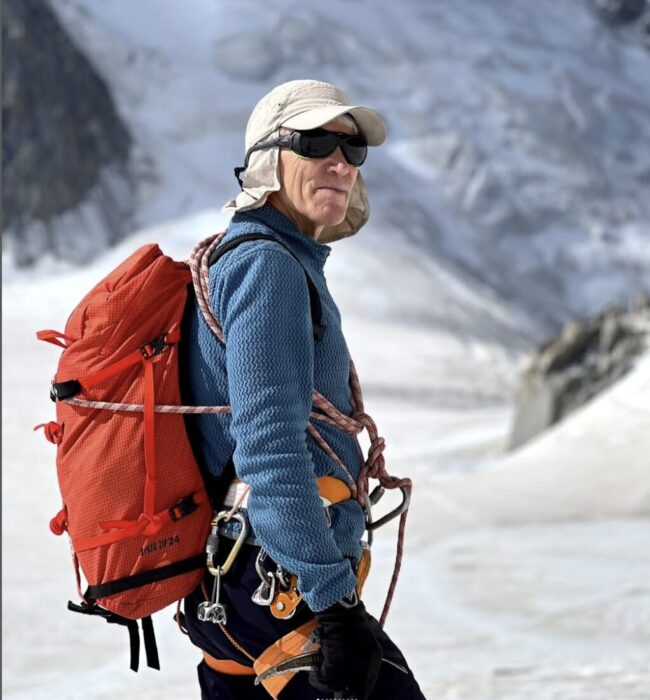
Living legend Valery Babanov will attempt Everest without oxygen.
Marcin Miotk became the first Polish climber to summit Everest without oxygen (and climbing on his own) in 2005. This time, he reportedly hesitated before committing, because of the overcrowded state of the mountain.
However, he says, “I always dreamed of admiring Everest from the Nepalese side, crossing the famous Icefall at least once more, and seeing the vastness of the Western Cwm.”
Miotk is expected in Base Camp this week. Last year, he attempted Makalu.
More record setters
After running, cycling, and swimming 12,000km from his home in the UK over 210 days to Nepal, Mitch Hutch is about to reach Everest BC at last. The athlete promised to let his beard grow wild until then. He reached Lobuche today and will continue to Base Camp tomorrow. There, he will be able to “relax” and climb Everest with all-star guide Gelje Sherpa of AGA Adventures.
Speaking of records, Dawa Finjhok Sherpa set a record of his own last year when he summited Everest three times within a week, on oxygen and guiding clients. This season, he plans to summit Everest, Lhotse, and Makalu within 24 hours, according to Everest Chronicle.
In addition to the athleticism needed to climb so quickly at altitude, he may face the logistical challenge of crowds in the Icefall, on the upper sections of Everest, and during the descent from Lhotse. He’ll also have to reach Base Camp in time to catch a helicopter to Makalu.
Once again, Everest legend Kami Rita Sherpa, 55, has confirmed to ExplorersWeb that he will make his 31st summit next month. One of the leading guides with Seven Summit Treks, the veteran from Thame has summited Everest almost every year since 1994. In recent years, he has sometimes climbed the mountain twice. Last spring, he even considered a third ascent, but in the end, it didn’t quite happen.
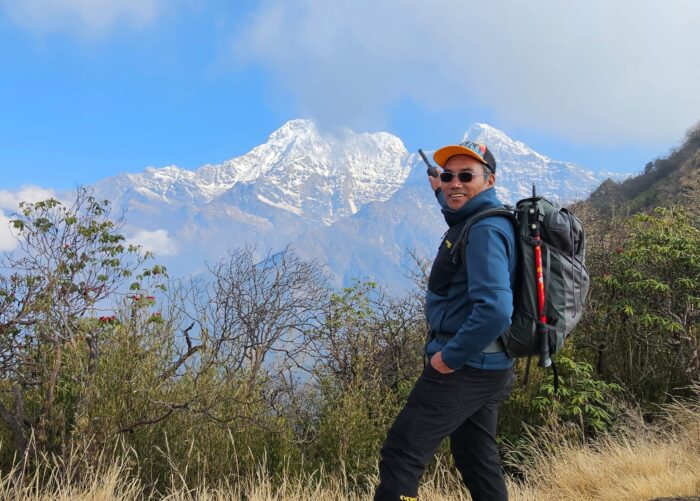
Kami Rita Sherpa points to the Himalayan peaks while guiding a trekking group. Photo: Kami Rita Sherpa/Facebook
